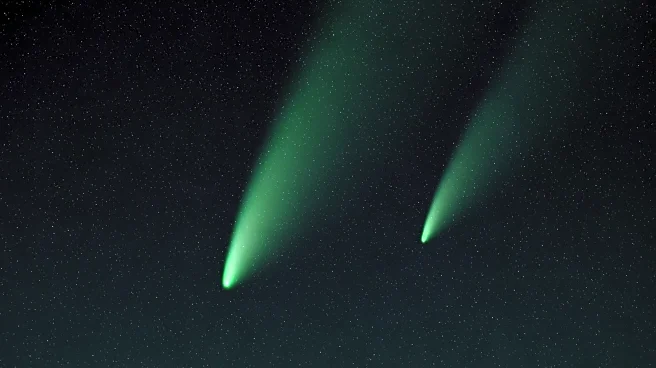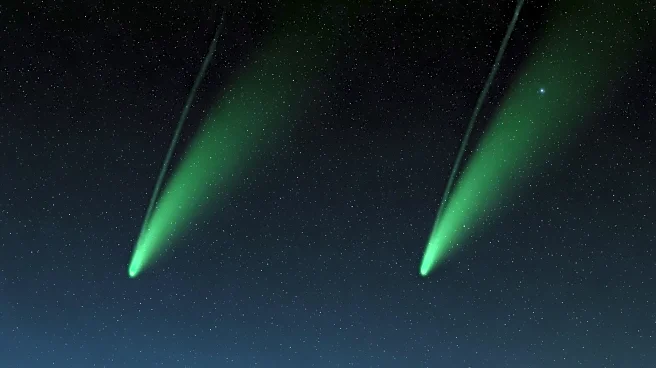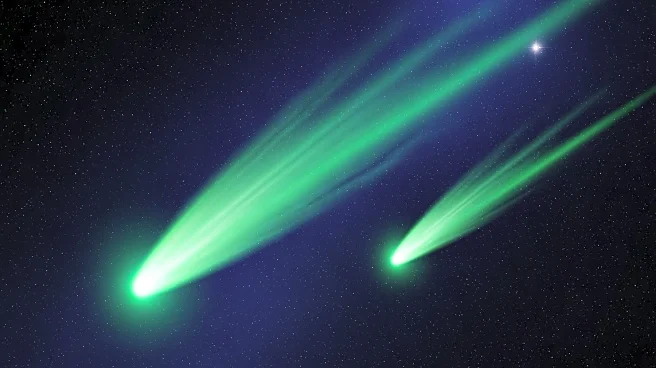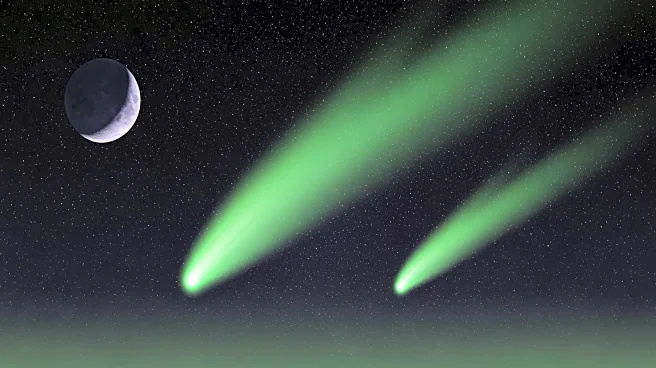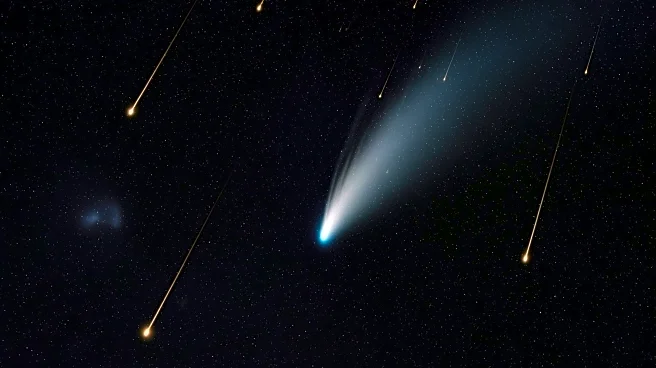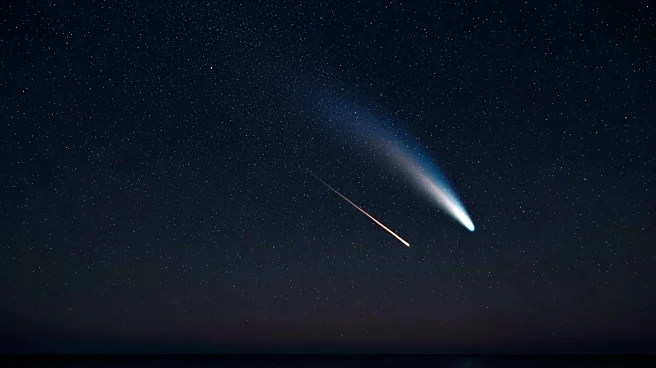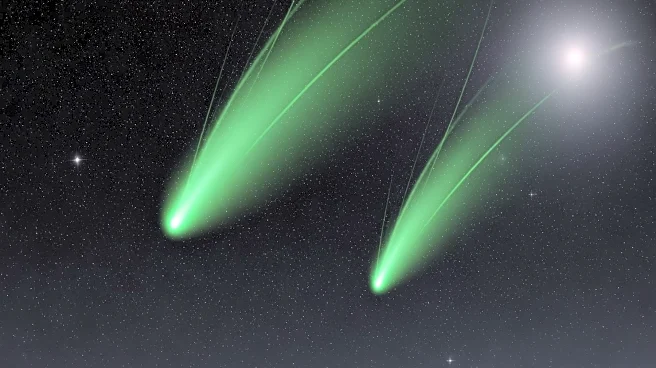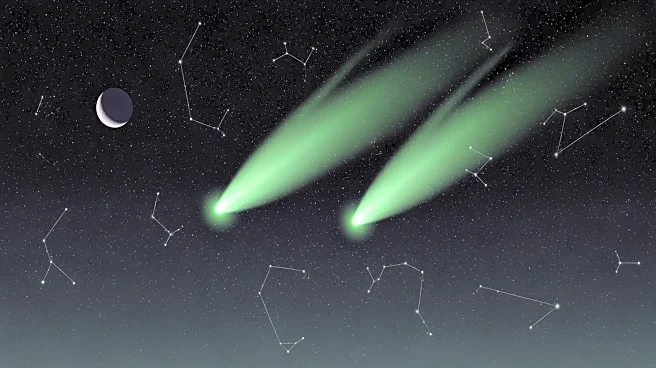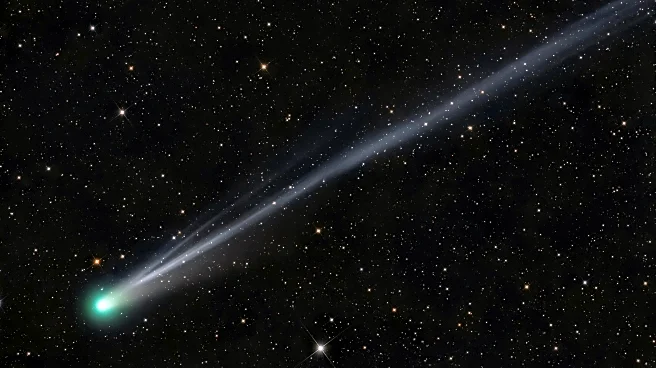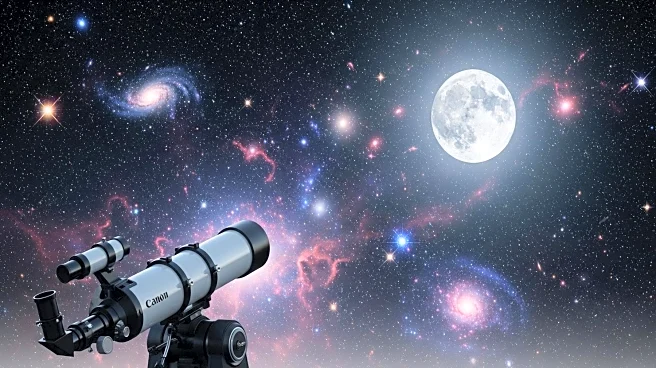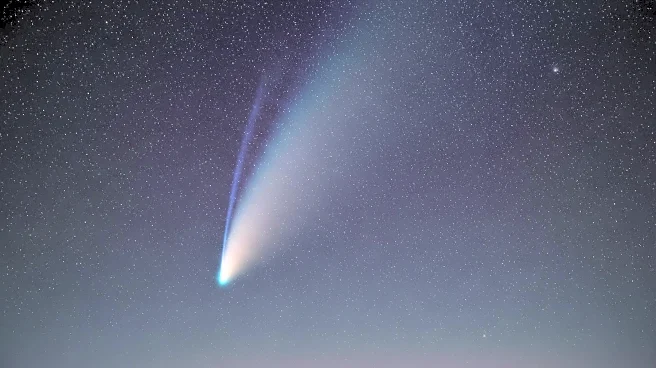What's Happening?
Two bright green comets, Comet Lemmon (C/2025 A6) and Comet SWAN (C/2025 R2), are currently visible in the Northern Hemisphere's night sky. Comet Lemmon will be closest to Earth around Tuesday, while Comet SWAN will have
its flyby on Monday. Both comets originate from the Oort Cloud, far beyond Pluto, and are visible without special equipment. Skywatchers can spot Comet Lemmon near the northern horizon and Comet SWAN to the southwest after sunset. The comets are expected to be visible with binoculars through the end of the month.
Why It's Important?
The simultaneous visibility of two comets offers a unique opportunity for astronomers and enthusiasts to observe these celestial phenomena. Comets provide valuable insights into the solar system's formation and the conditions of the early universe. Their appearance can inspire public interest in astronomy and science, potentially encouraging educational initiatives and research funding. The event also highlights the capabilities of modern telescopes and amateur astronomers in discovering and tracking celestial objects, contributing to our understanding of space.
What's Next?
As the comets continue their journey, astronomers will monitor their brightness and trajectory, providing updates to the public. Observations may lead to new discoveries about the composition and behavior of comets, enhancing scientific knowledge. The visibility of these comets could spark interest in upcoming skywatching events, encouraging more people to engage with astronomy. Educational institutions might organize viewing sessions, fostering community involvement and promoting science education.
Beyond the Headlines
The appearance of these comets underscores the importance of international collaboration in space exploration. Discoveries made by amateur astronomers and professional observatories alike contribute to a global understanding of the cosmos. This event may also prompt discussions about the role of citizen science in advancing astronomical research, highlighting the potential for public participation in scientific endeavors.
